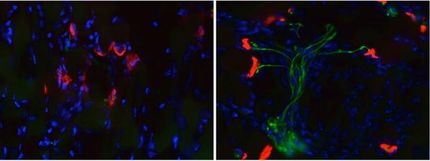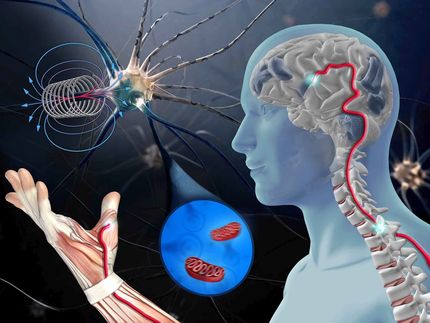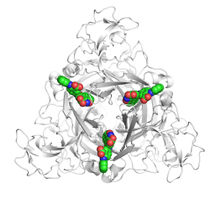Common RNA pathway found in ALS and dementia
Advertisement
Two proteins previously found to contribute to amyotrophic lateral sclerosis (ALS), also known as Lou Gehrig's disease, have divergent roles. But a new study, led by researchers at the Department of Cellular and Molecular Medicine at the University of California, San Diego School of Medicine, shows that a common pathway links them.
The discovery reveals a small set of target genes that could be used to measure the health of motor neurons, and provides a useful tool for development of new pharmaceuticals to treat the devastating disorder, which currently has no treatment or cure.
Funded in part by the National Institutes of Health and the California Institute for Regenerative Medicine (CIRM), the study will be published in Nature Neuroscience .
The two proteins that contribute to ALS – FUS/TLS and TDP-43 – bind to ribonucleic acid (RNA), intermediate molecules that translate genetic information from DNA to proteins. In normal cells, both TDP-43 and FUS/TLS are found in the nucleus where they help maintain proper levels of RNA. In the majority of ALS patients, however, these proteins instead accumulate in the cell's cytoplasm – the liquid that separates the nucleus from the outer membrane, and thus are excluded from the nucleus, which prevents them from performing their normal duties.
Since the proteins are in the wrong location in the cell, they are unable to perform their normal function, according to the study's lead authors, Kasey R. Hutt, Clotilde Lagier-Tourenne and Magdalini Polymenidou. "In diseased motor neurons where TDP-43 is cleared from the nucleus and forms cytoplasmic aggregates," the authors wrote, "we saw lower protein levels of three genes regulated by TDP-43 and FUS/TLS. We predicted that this, based on our mouse studies, and found the same results in neurons derived from human embryonic stem cells."
In 2011, this team of UC San Diego scientists discovered that more than one-third of the genes in the brains of mice are direct targets of TDP-43, affecting the functions of these genes. In the new study, they compared the impact of the FUS/TLS protein to that of TDP-43, hoping to find a large target overlap.
"Surprisingly, instead we saw a relatively small overlap, and the common RNA targets genes contained exceptionally long introns, or non-coding segments. The set is comprised of genes that are important for synapse function," said principal investigator Gene Yeo, PhD, assistant professor in the Department of Cellular and Molecular Medicine and the Institute for Genomic Medicine at UC San Diego and a visiting professor at the Molecular Engineering Laboratory in Singapore. "Loss of this common overlapping set of genes is evidence of a common pathway that appears to contribute to motor neuron degeneration."
In an effort to understand the normal function of these two RNA binding proteins, the scientists knocked down the proteins in brains of mice to mimic nuclear clearance, using antisense oligonucleotide technology developed in collaboration with ISIS Pharmaceuticals. The study resulted in a list of genes that are up or down regulated, and the researchers duplicated the findings in human cells.
"If we can somehow rescue the genes from down regulation, or being decreased by these proteins, it could point to a drug target for ALS to slow or halt degeneration of the motor neurons," said Yeo.
These proteins also look to be a central component in other neurodegenerative conditions. For example, accumulating abnormal TDP-43 and FUS/TLS in neuronal cytoplasm has been documented in frontotemporal lobar dementia, a neurological disorder that has been shown to be genetically and clinically linked to ALS, and which is the second most frequent cause of dementia after Alzheimer's disease.



















































